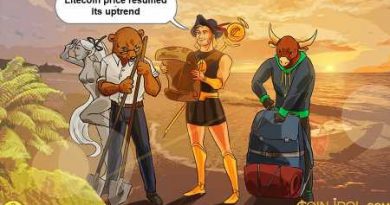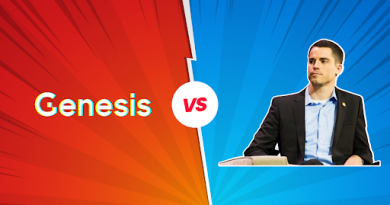Robert Rice on ‘Hashing it Out’ Episode 7: Disrupting casino marketing with AR, VR & BSV
The first time I saw Robert Rice on stage at a CoinGeek Conference I was impressed. This early AR/VR pioneer and entrepreneur has a special energy, charisma and intelligence plus a vision that will change the face of marketing across all industries.
In this episode of Hashing It Out, Rice, who is the founder of Transmira and developer of Omniscape, a platform that uses “XR” to enable ground-breaking marketing capabilities, talks on how his invention can benefit the gaming industry space in particular.
XR Metaverse defined
Rice coined the term “XR” which is essentially a blend of Augmented Reality (AR), Virtual Reality (VR), Internet of Things (IoT), 5G and blockchain to make an “Experiential Reality.”
“Metaverse” for Rice is when everything, everywhere is connected, everything from 3D spaces to AR, digital twins and smart cities, but all with a connection back to the real world as opposed to existing only in a game world.
Rice’s mission with Omniscape is to fuse these two concepts together and build an “XR Metaverse.”
NFTs for land based gaming
The concept of NFTs has captured the attention of the gaming industry as we covered in the last Hashing it Out episode with FYX Gaming, and Rice offers perspective on how to use NFTs as a marketing tool for land based casinos and related retail. Rice describes these NFTs as something “designed to reach people where they are, engage them and get them to go somewhere to redeem or exchange.”
There are two ways casinos can take advantage of the technology Rice and his team are developing. First, they can use AR and geolocation to create brandable items such as 3D poker chips and drop them anywhere—a competitor’s casino, or some other region that they’re trying to target, for example—to be redeemed at the land based property.
“You basically put the content where your ideal customer is and attract them,” Rice said.
Combining NFTs with “digital twins” is another futuristic way casinos can engage current and potential customers. A casino could mock up their entire hotel and casino floor at a one to one scale as a “digital twin” and create themselves a huge, new marketing tool.
“When you actually have an immersive 3D environment that you can explore with a custom avatar with your friends at the same time, with interactivity, you can even get some of the games actually working in there and link that back to your normal website,” Rice suggested.
“You’re now creating this fun experience that really gives somebody a sense of presence and actually being there—what is it really like here, what does it look like—help them familiarize themselves with it,” he said.
“You could have AI-driven customer service avatars walking around or actual live people working their avatars and giving people this whole other virtual experience,” he said.
“Even though COVID may be screwing you up, you can still make money. You can still engage with all of your best gamblers or new people. And then, as COVID and other things free up, you’re still engaging. You’re pushing the brand awareness, the brand engagement, the brand experience, there’s so many benefits to this,” Rice added.
While this type of “next gen” marketing might sound rather complicated and expensive at first blush, Rice urges forward-thinking casino operators and even convention centers to take the plunge and stand out from their competition.
“The payoff, it’s so huge and at this point, it would set them apart from everybody else, which gives them a huge competitive edge,” Rice said.
Bridging the gap between online and land based gaming
The opportunities with NFTs and the XR Metaverse do not stop with land based gaming. Imagine attending a football match and picking up 3D items at the stadium to be redeemed online at a sports betting site, for example. Taking advantage of this technology could also serve as a wonderful way to bridge the online gaming world with the land based side of the industry.
“What’s interesting about all of this stuff that we’re talking about here is, again, the idea of linking digital content, whether it’s 2D, 3D, whatever, with some kind of real world link,” Rice pointed out.
Imagine playing a game online—slots for example—and opening up a little chest with fun items inside. Perhaps the digital items could be used to dress up an avatar or they could be sent to a friend or maybe even be exchanged for something real at the brand’s land based property.
“You could have 3D poker chips across the planet for people to find and discover. Or you can have little 3D trophies that I earned in the game environments…or I can go to a store or a restaurant or some experience or even a theater that’s at a casino and then exchange these things or upgrade them or transfer or trade them with some other people,” Rice suggested.
“So it’s really at this point, casinos need to get a creative guy and empower him with the budget and say, ‘go do something amazing to make us more money’ and they need to be going head first into this metaverse stuff,” Rice advised.
“If casinos were smart, they should be really engaging the younger people now with a lot of these higher end tech, because they’re going to retire out their own user base if they don’t,” he predicted.
Where does blockchain fit in?
Transmira is a perfect example of an innovative company in the blockchain space that does not tout itself as a blockchain company. Rather, they identify themselves as a marketing and advertising company and blockchain tech is simply running in the background.
“We are not a crypto company building crypto things for crypto people and crypto fans,” Rice clarified.
“Blockchain for us has been an enabling technology. It allows us to do things that are normally otherwise really difficult to do or figure out how to handle,” he said.
“We don’t want people to fraud or copy things. So each one of these little objects has to be unique…and then because it’s all on blockchain, it’s like, wow, now I’ve got this amazing historical record that’s immutable and now I really know where this [NFT] came from, who owned it before me, what its history is…it’s like all these things start opening up,” he added.
Why BSV blockchain
When deciding what blockchain to use—because we all know there are many to choose from—Rice asked himself the following questions: Does it do what I need? Is it expensive? Is it fast? Can it scale and does it work?
After looking at the many options out there, Rice concluded that the BSV blockchain is the only one that can scale, has the speed, transaction volume capabilities and negligible transactions fees.
“I’m literally trying to put the entire bloody planet on blockchain. I need to be able to ingest gazillions of data things from IoT sensors, at some point I have to handle hundreds of millions of people running around with crazy, sexy avatars, all kinds of add-ons. I’ve got to do billions of 3D tacos. That’s my problem, I have billions of 3D tacos I need to track,” he said with a smile.
Try doing that on Ethereum, he says…
“You cannot be a serious business person, in my opinion, using some of these other solutions. Because, I mean, yeah, you can do something quick and fast and make a little bit of money, but you can’t scale. There’s a hard stop up here,” Rice said.
“And then, of course, they’re like, oh, well, these other things are coming in two years or five years, or you can use five side chains plus six other things and five other protocols. It’s like, what is wrong with you people? There’s a simple solution here,” he pointed out.
“If anybody takes the time to do their homework, they’ll come to the same conclusion. And then you never look back. And then when you’re actually doing it, it’s like, wow, this is actually kind of easy and it moves really fast,” he said.
Source: Read Full Article



